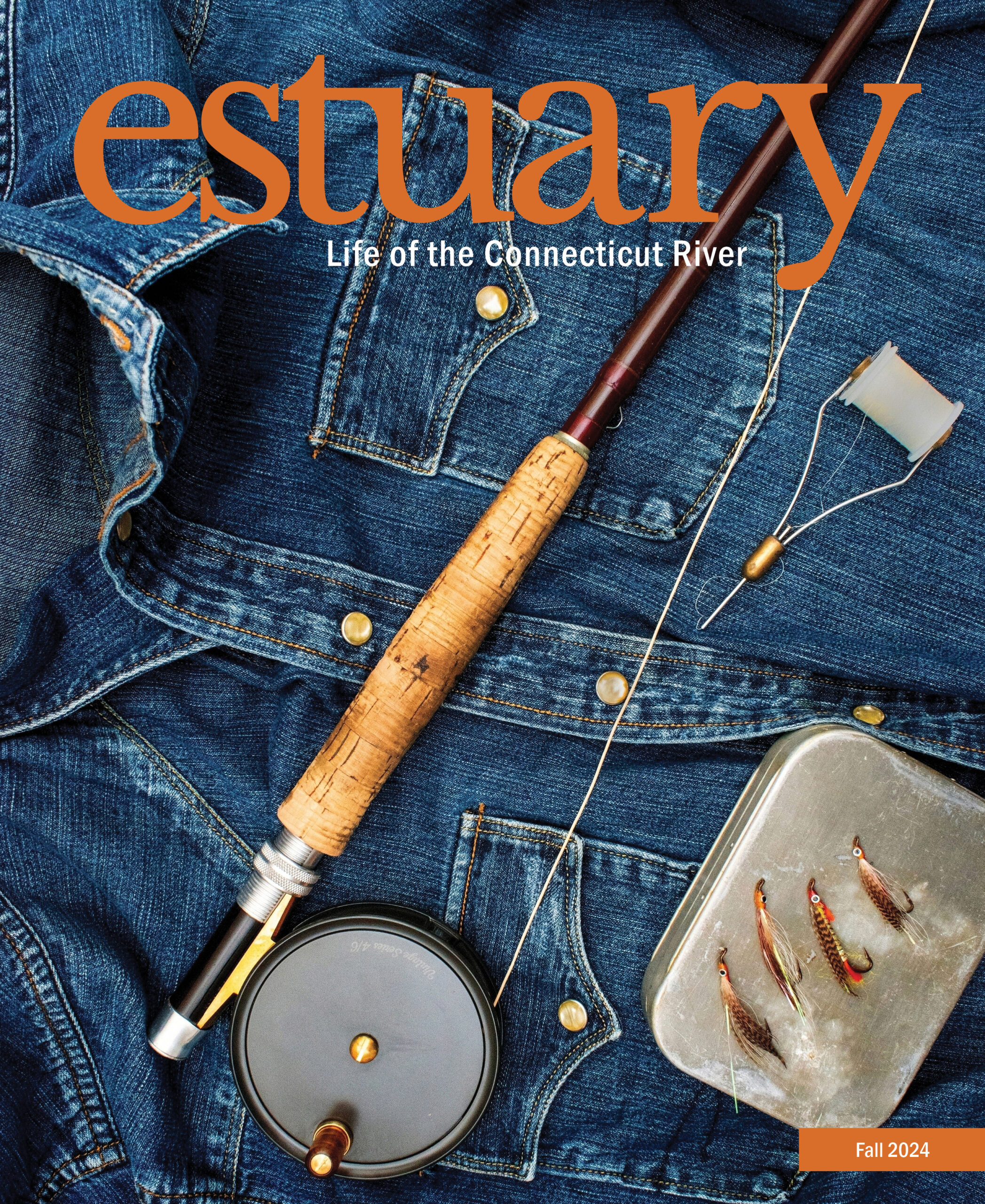 This article appears in the Fall 2024 issue
This article appears in the Fall 2024 issue
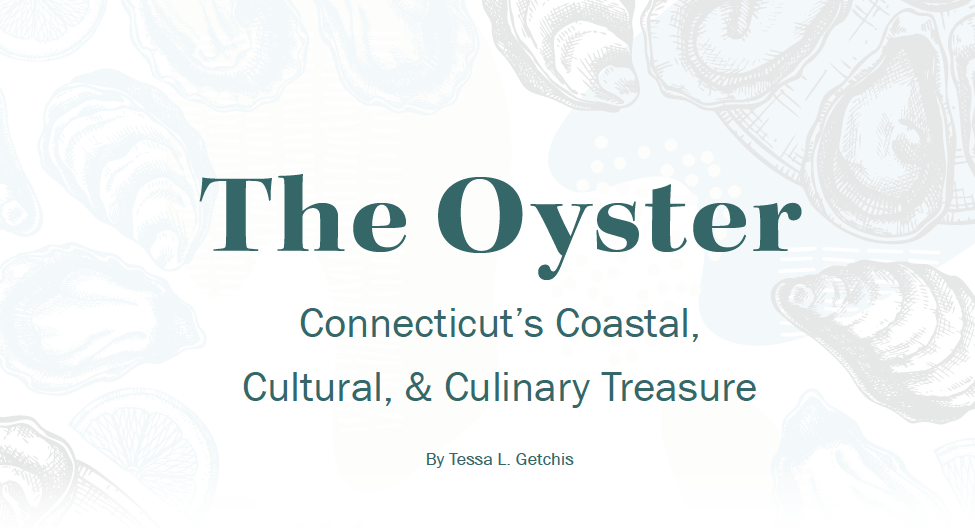
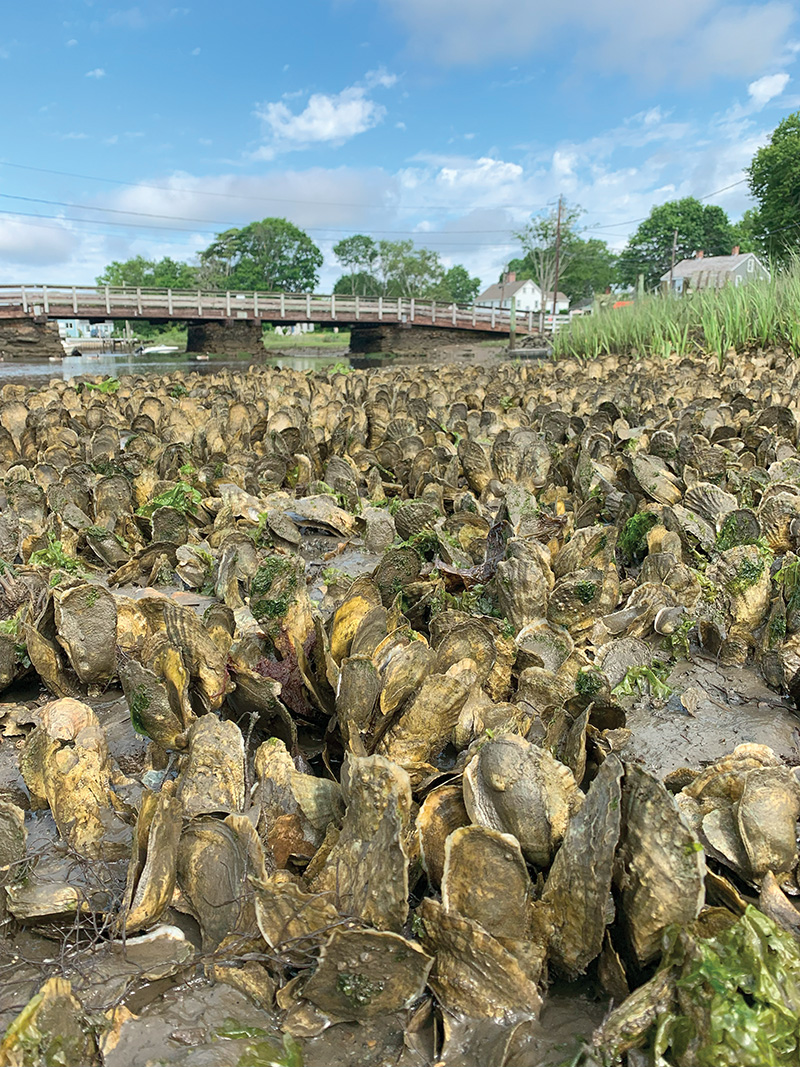
The Hammock River in Clinton is home to a thriving intertidal oyster bed. Image Credit: Tessa Getchis
Connecticut is known around the world for its oysters. Long before Dutch explorer Adriaen Block sailed along the coast encountering vast oyster reefs along his way, scores of Indigenous American tribes had been migrating seasonally to the shore to gather the iconic shellfish. In fact, it was those tribes that taught European colonists how to capture the sea’s bounty, saving them from what would surely otherwise be starvation. Their dependence on shellfish, especially oysters, was passed down through oral tradition and later documented when massive shell piles were unearthed by archeologists. Shell piles have been found at the mouths of many rivers, including the Connecticut River and even sites far inland.
The oyster is to Connecticut what the lobster is to the state of Maine, but it’s not just a culinary treasure. Oyster “beds” or “reefs” are one of our most important coastal ecosystems providing habitat for a multitude of marine organisms, protecting our coasts from erosion, and improving water quality. In his 1881 report on the oyster industry of the US, naturalist Ernest Ingersoll noted that oysters were found along the entire coast, with large natural beds in every harbor westward of the Thames River in New London. Nearly the same is true today, and shellfishing supports both a vibrant commercial industry and recreational harvest opportunities along the coast. In recognition of its importance from cultural, ecological, and economic standpoints, the oyster was designated as Connecticut’s State Shellfish in 1989.
But the oyster’s habitat is threatened. A study conducted by a team of ecologists estimated that more than 85 percent of the world’s oyster reefs have been lost, a rate unprecedented for any other marine habitat. Historically, overfishing, development, and pollution nearly decimated oyster populations in Long Island Sound. Recognizing the critical function of the oyster, by the late 1800s the State of Connecticut took action to protect thousands of acres of oyster beds, making it today, according to Boze Hancock of The Nature Conservancy, “one of the few places on earth where large-scale and self-sustaining natural oyster beds still exist.” Still, a changing climate is putting the health of this protected natural resource at risk.
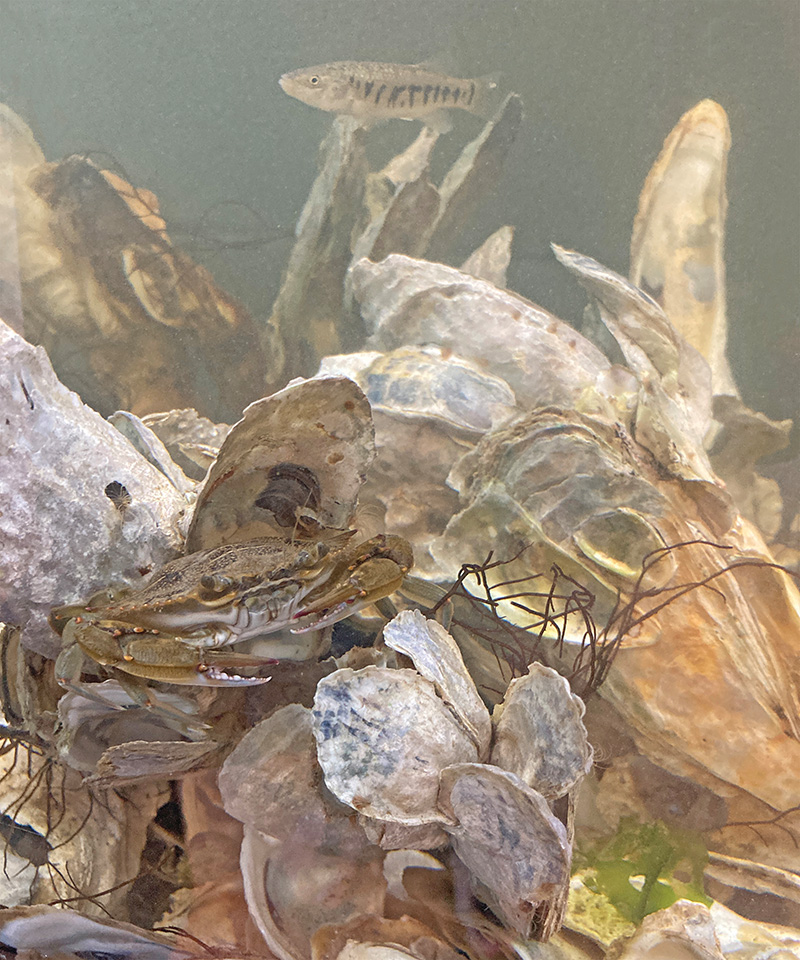
Oyster reef with blue crab. Image Credit: Zosia Baumann
The image that likely comes to mind when people think of the Connecticut coast is a mix of rocky shores, sandy beaches, and grassy salt marshes carved by slowly meandering tidal creeks, swift rivers, or broad harbors. What these diverse estuarine habitats share in common is that what lies beneath is rarely seen. The turbid, plankton-rich waters obscure the world below. But as the tide rolls out, a secret habitat is revealed, an underwater Atlantis built upon the oyster.
Oysters belong to a group of soft-bodied invertebrates called bivalve mollusks. The oyster, like its close relatives the clam, mussel, and scallop, is characterized by having two-hinged shells that enclose its soft body. This trait distinguishes bivalves from other mollusks like snails that have only one shell. There are about 200 species of oysters found throughout the world, five native to the US, and only one native to Connecticut.
The native oyster, known as the American or Eastern Oyster (Crassostrea virginica) is found along eastern North America from the Gulf of St. Lawrence to the Gulf of Mexico. It naturally inhabits brackish estuaries, the places where seawater and freshwater mix, and though oysters commonly grow in intertidal beds exposed by the ebbing tide, they are found in waters up to thirty-five feet deep.
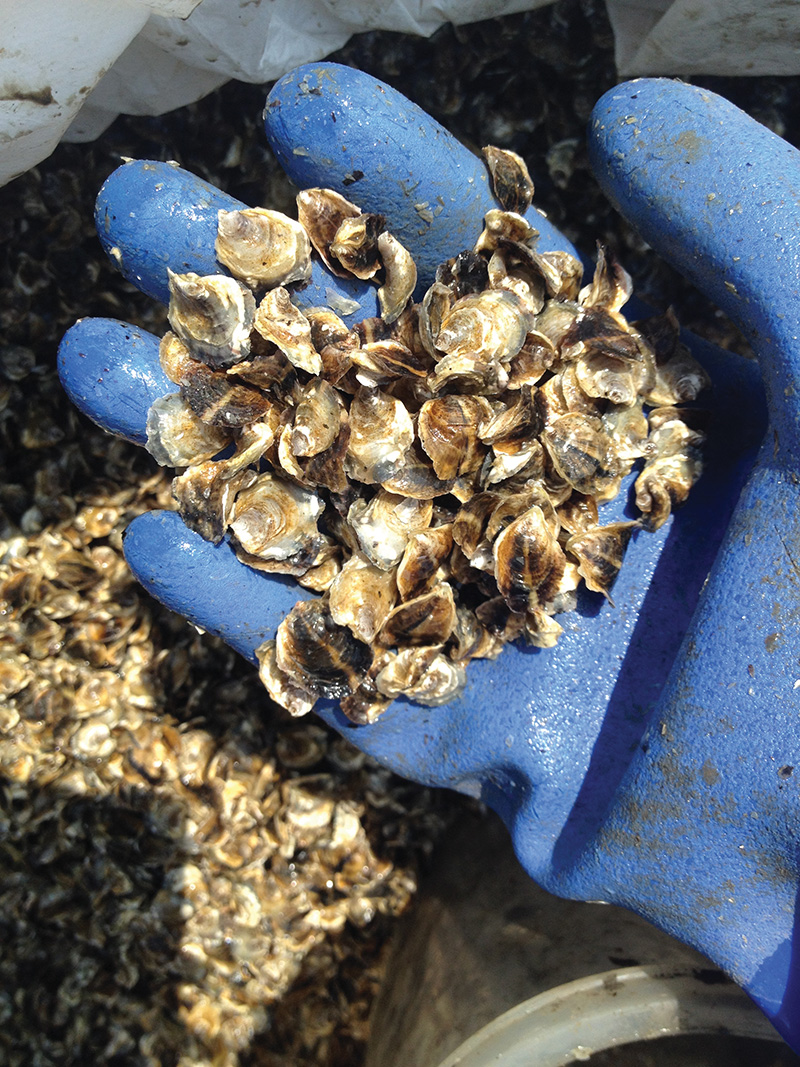
Small oyster spat can be collected from the wild or grown in a hatchery. Image Credit: Tessa Getchis
Oysters are broadcast spawners, releasing their gametes (eggs and sperm) as the water warms in summer. The word “gamete” comes from the Greek gamos or marriage, and this marriage is more of a roll of the dice when it comes to oysters. The female oyster produces hundreds of thousands of free-floating eggs. She does so to overcome the odds facing her brood. Chances are that most of her eggs will be carried away by currents, never to be fertilized. Developing oyster larvae also face a variety of voracious predators—especially crabs. Within hours they begin to extract minerals from that water and form a protective calcium carbonate shell. This weight causes them to sink to the sea floor where the newly settled “spat” find a permanent home. Oysters can grow in excess of eight inches, and some have lived twenty years or longer. The survival of oysters from the time they settle to the bottom and throughout their life span is less than 5 percent.
Wild oysters grow in clusters, forming large reefs. Similar to coral reefs, oyster reefs are constructed from the calcium carbonate skeletons of those animals, and this living structure provides food, shelter, and reproductive grounds for numerous species of marine fish and invertebrates. As the shellfish reproduce, die, and are eroded, the size and complexity of the three-dimensional reef changes, adding new nooks and crannies. This habitat-forming ability serves a critical function in the marine ecosystem and makes them among the most diverse habitats on the planet. The barrier reefs also absorb wave energy, buffering shorelines from currents, waves, and storms that cause erosion, and help to prevent loss of life and property damage.
Oysters also serve as nature’s filter, making estuarine waters cleaner and clearer. With its two shells slightly agape, the oyster draws water across its large feather-like gill which acts like a strainer sorting its food source, microalgae, from other suspended particles. The surrounding water is rendered clearer as any unconsumed particles are expelled in mucus-coated “pseudofeces.” This metabolic byproduct settles to the seafloor where it becomes food for worms and other benthic dwelling organisms. Without filter-feeding shellfish to keep the ecosystem in balance, excess nutrients from land cause algae to bloom and a cascade of negative consequences ensues. An algae bloom blocks sunlight from seagrasses, and as the bloom dies the oxygen in the water is consumed leaving it a dead zone for aquatic life.
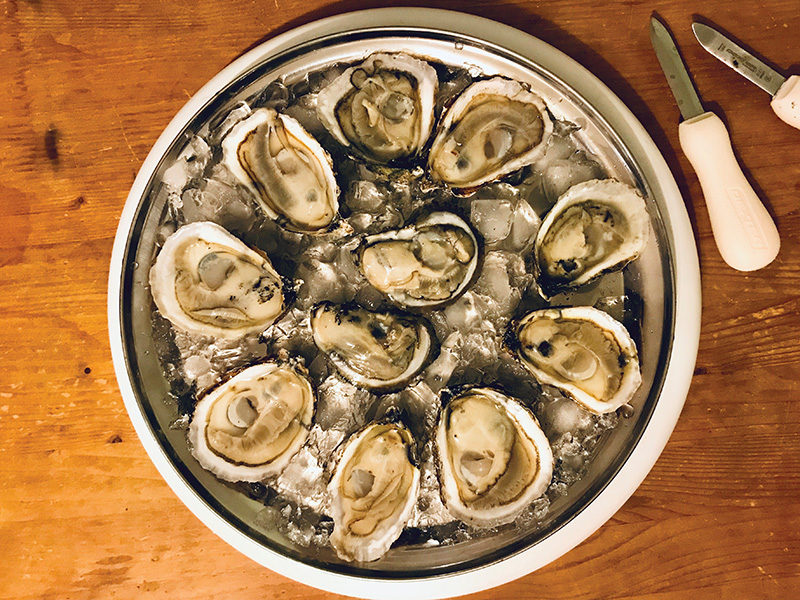
Connecticut oysters on the half shell. Image Credit: Julia Cooper
Though Mother Nature produces oysters, intervention is sometimes necessary. During the late 19th century, Connecticut was considered the center of the world’s oyster industry and had the largest fleet of oyster fishing vessels on the globe. Inevitably, the heavy fishing pressure took its toll. This necessitated a transition from wild harvest to farming, and oyster aquaculture developed into a major industry.
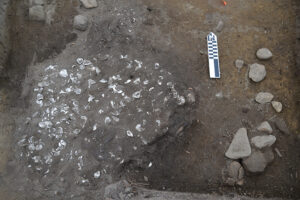
Oyster shell midden approximately 500 years old, c. 1990s. Image Credit: Dr. Kevin McBride
Aquaculture was not a new practice even then. In fact, ancient Romans are credited as being the first to propagate oysters. As small oysters were encountered along the coast, people realized they could successfully transplant them to locations more favorable for growth and convenient for harvest. That 2,000-year-old cultivation method is still used in Connecticut today where nearly 60,000 acres of privately leased shellfish grounds are worked. The majority of farmers still rely upon natural oyster beds as a source of seed, as opposed to buying seed from a hatchery, so the sustainability of those beds is critical to the success of the industry.
The harvest and farming of our unique cold-water oyster is incredibly important to our state—Governor Lamont calls Connecticut the “Napa Valley of Oysters.” These tasty bivalves are a healthy source of protein, and oyster farming supplies local jobs, supports small businesses, and generates revenue. Farmers also contribute oysters that are planted in recreational harvest areas, providing the public with the opportunity to gather their own. A little-known fact is that shellfish grounds—natural beds, commercial farms, and recreational harvest areas—comprise more than 20 percent of the total area of Connecticut’s coastal waters. According to the Connecticut Department of Agriculture, oyster production was a $15 million industry in 2023, and sales of recreational shellfishing permits generated more than $2 million dollars to the local economy annually. (Note: for comparison, the oyster industry in the Maryland portion of the Chesapeake Bay, a major source of oysters for middle America since the late 1880s, is $9 million a year.)
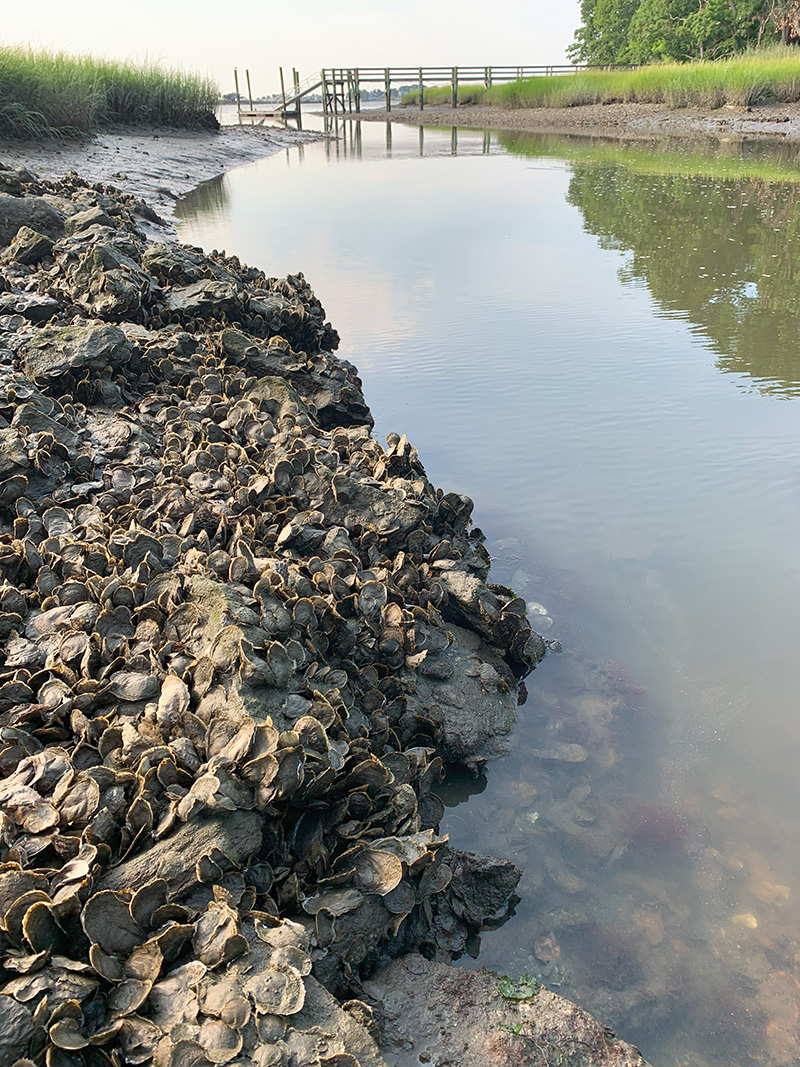
Fringing oyster reef at Pine Creek in Branford. Image Credit: Tessa Getchis
Oysters face a number of stressors including predation, disease, harmful algae, water quality impairments, and development, as well as climatic changes such as rising air and water temperatures, changes in salinity, and acidifying waters. However, oysters are known to be resilient, having a wide tolerance to environmental conditions. Today, however, one of the most significant threats to the survival of oyster beds and shellfish farming is the increasing frequency of heavy rainfall events. Swiftly moving rivers, swollen by runoff from land, carry an overwhelming quantity of sediment as they travel seaward. The river flow slows as it interfaces with tidal currents, and the heavy soils sink to the seafloor. In normal conditions, this sediment enriches the seafloor, but too much of it and the habitat is smothered. Oyster beds need to outgrow the pace of sediment accumulation, or they face certain demise.
To that end, state environmental agencies, scientists, fishermen, and farmers have been making a concerted effort to rehabilitate the state’s natural oyster beds. The ongoing multi-year effort has involved surveying and mapping oyster habitat and planning and implementing a large-scale restoration effort. The work involves three aspects: 1) recovering buried shell, 2) replanting clean shell to create or grow the foundation of the reef, and 3) planting oyster spat, or adult oysters atop of that substrate to aid in repopulating the reef.
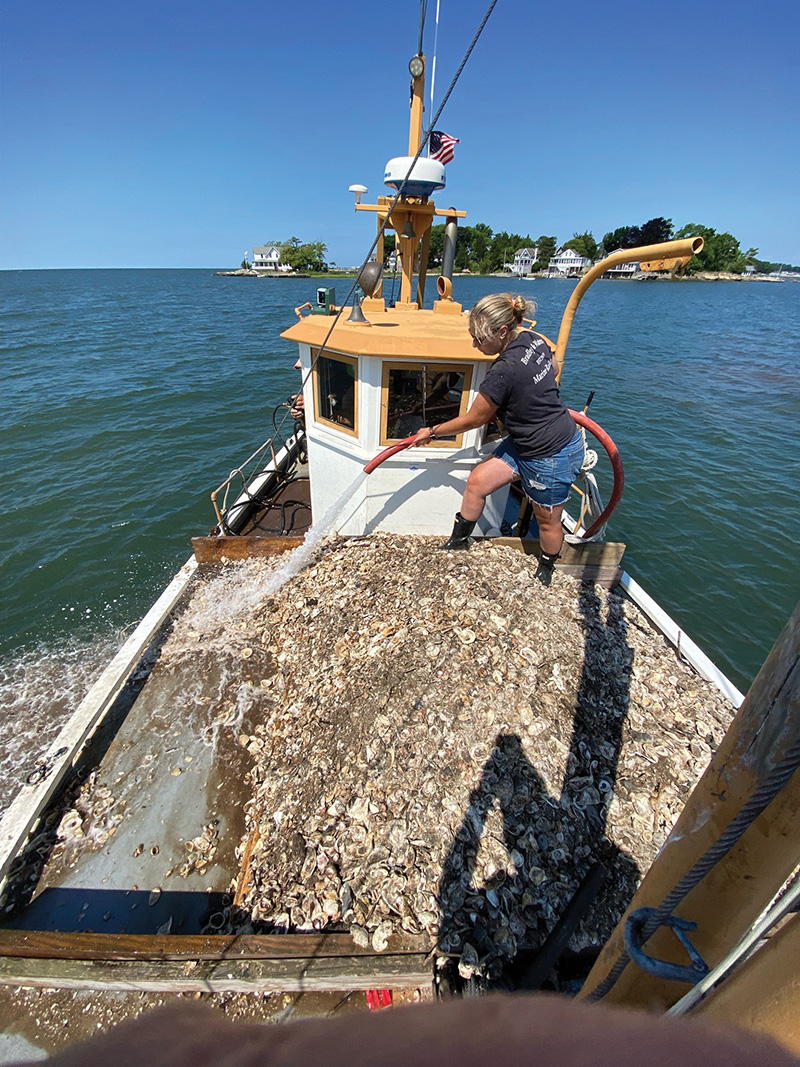
Emilie Waters of Thimble Island Shellfish plants oysters in Branford. Image Credit: Jonathan Waters
The preliminary results are promising, yet there is more work to be done. Underwater video used to compare the habitat before and after intervention has proven the work to be successful in many areas that show visibly higher densities of both shell and oysters. How oyster reefs continue to rebuild themselves following human intervention remains unanswered. For example, there are still gaps in our understanding especially when it comes to predicting when and where larval oysters will settle, and in what quantities. Dr. Michael Whitney and colleagues at the University of Connecticut recently received funding from Connecticut Sea Grant to study how oyster larvae travel from spawning areas to natural shellfish beds. David Carey, Director of the Connecticut Department of Agriculture’s Bureau of Aquaculture, said, “the project has extreme importance to where the industry and the State invest the limited restoration dollars and materials in order to receive maximum return.”
The initial stages of the restoration initiative focused on those natural beds that were of most significance to the industry as sources of oyster seed. The next stage of the project, part of the Long Island Sound Watershed Operations Plan, involves identifying and prioritizing geographic locations of oyster beds that have the most potential for gaining ecosystem services such as water quality improvement and shoreline erosion control. The Connecticut River is proposed as one such site, and there are many others.
While there may be a limit to the funding available for oyster restoration, there is no shortage of enthusiasm for returning oyster beds to their former glory. The oyster has had different meaning to different peoples throughout time. For many it is “heaven on the half shell,” for others, it represents a day on the water harvesting oysters with their dad, yet to some the oyster is a living being, one inextricably linked to human life, and symbolizing abundance. From any of those perspectives, it’s a resource worth protecting. Connecticut’s oyster is truly a treasure to behold.
Tessa Getchis is Senior Extension Educator at the Connecticut Sea Grant & UConn Extension, University of Connecticut.
Shell Recycling
It takes an enormous amount and large expense to obtain shell and oysters to accomplish the task of oyster restoration. Organizations like Collective Oyster Recovery and Recycling (or CORR), are recycling shell from restaurants and seafood retailers and wholesalers across the state.
Visit corr-ct.org.

Connecticut Oyster Trail
Learn where oysters are farmed, shucked, and sold at ctvisit.com/articles/connecticut-oyster-trail.

Recreational Shellfishing Guide
Learn where you can harvest your own shellfish.
https://portal.ct.gov/doag/aquaculture1/aquaculture/recreational-shellfishing

